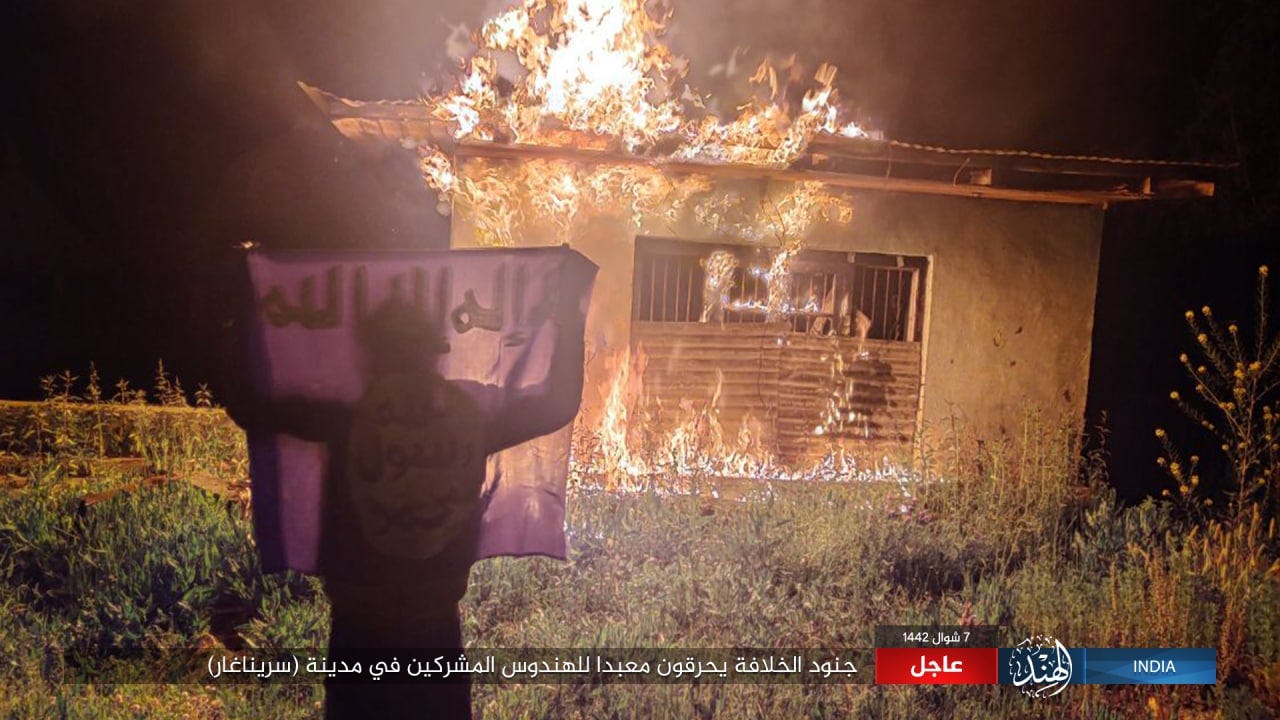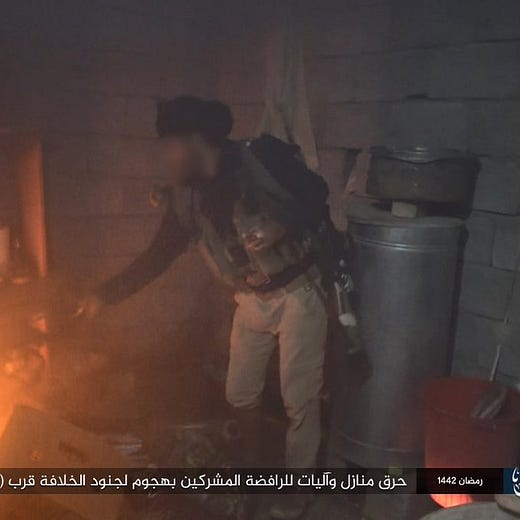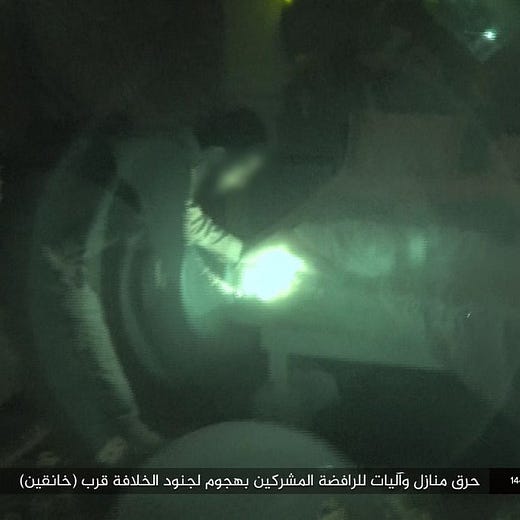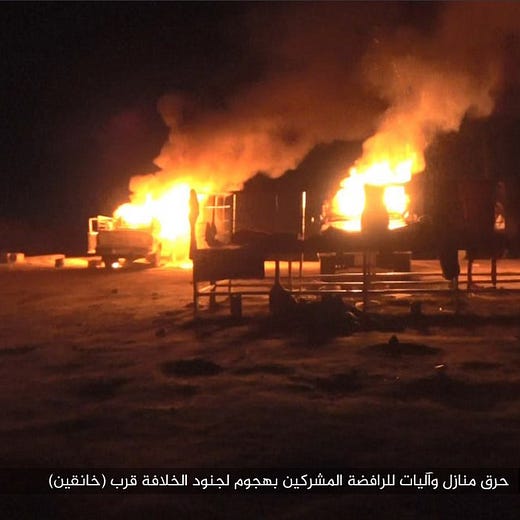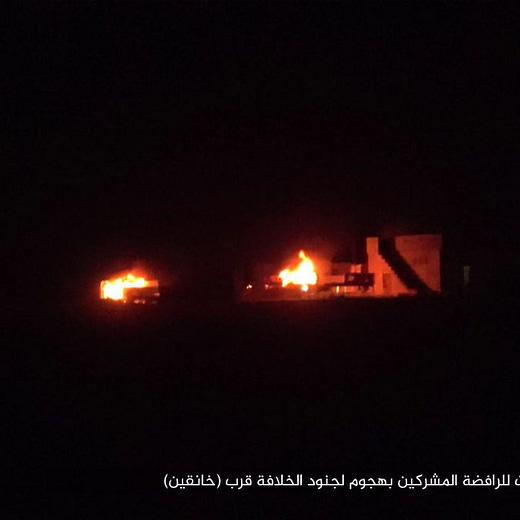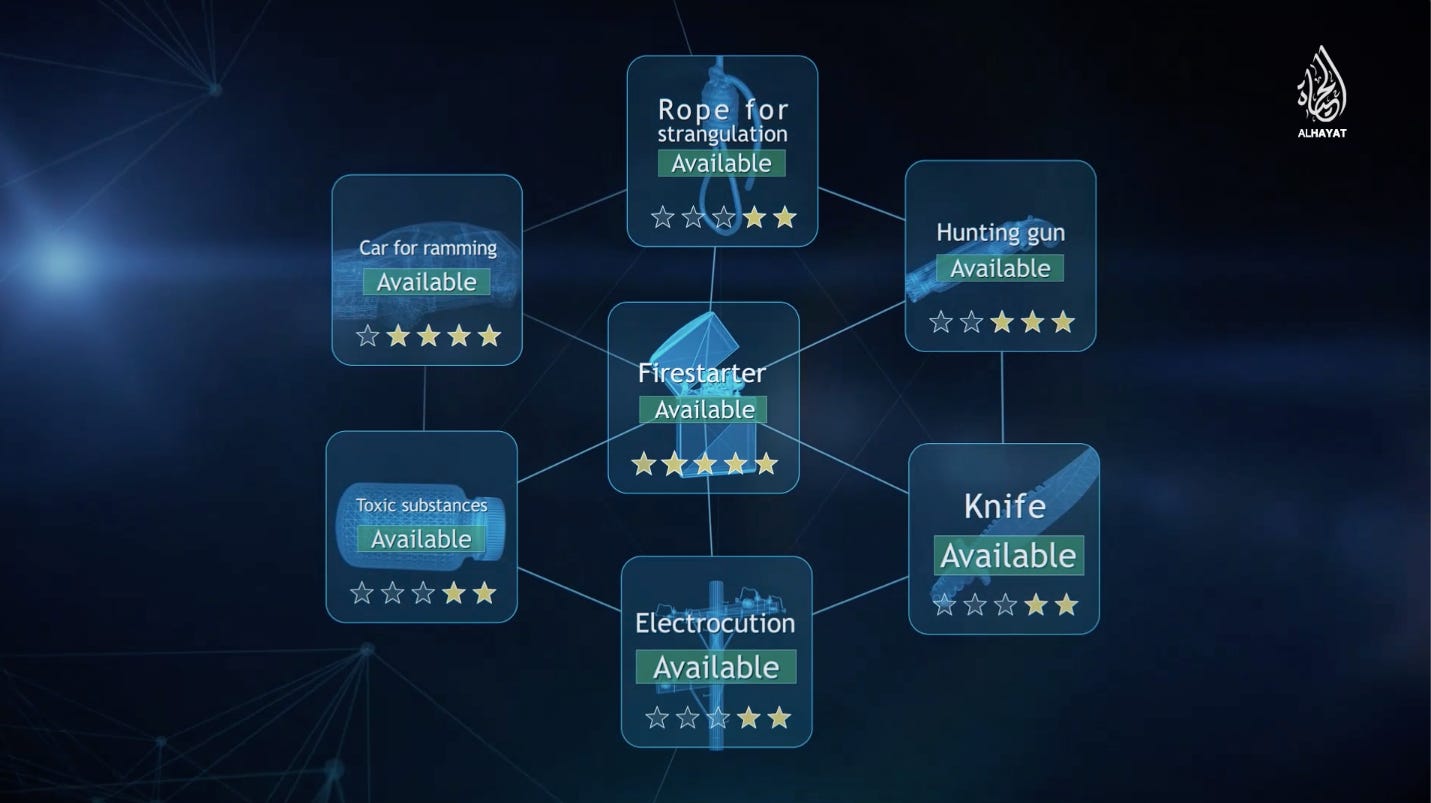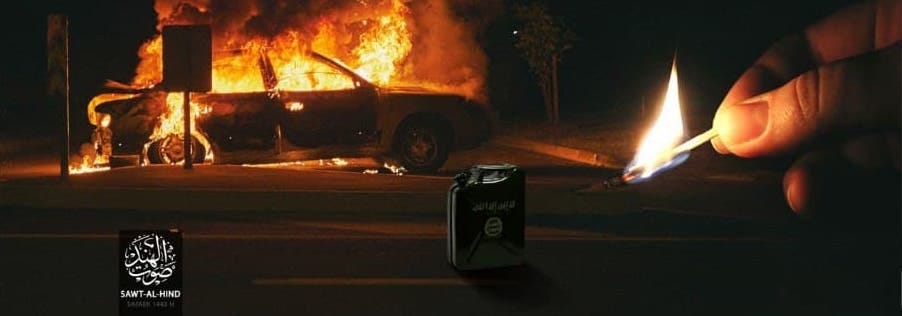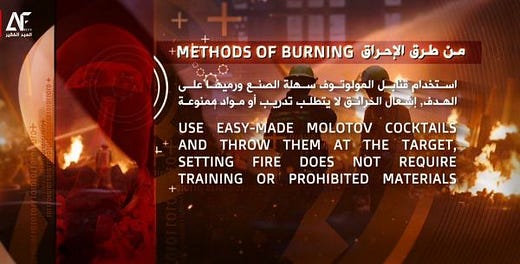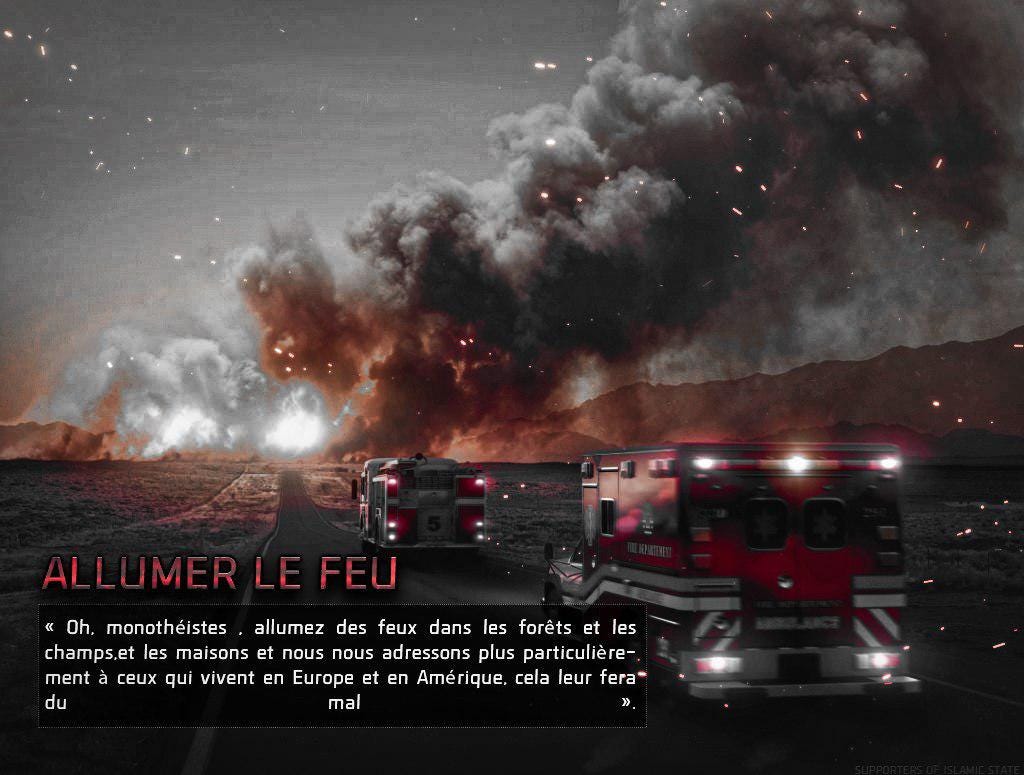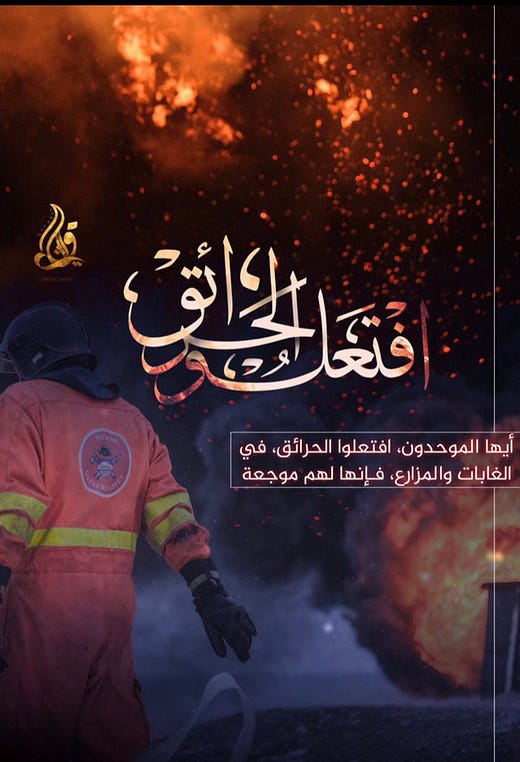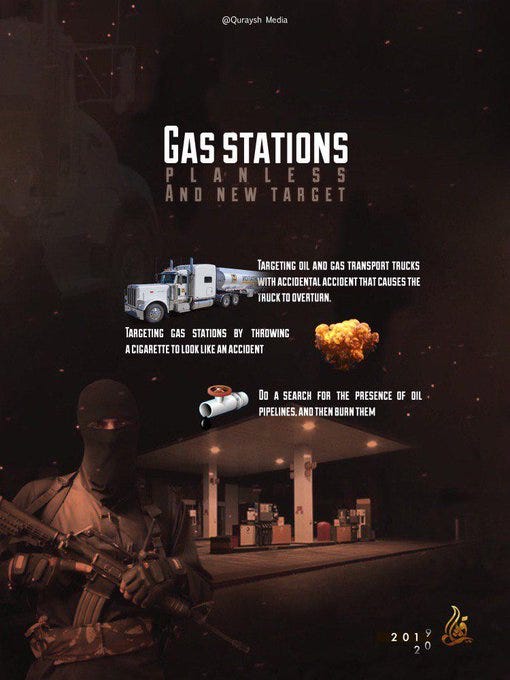The Islamic State has fostered a potent culture of violent incitement and its organizational directives have streamlined the jihadi attack process. From the official ranking leadership down to online supporters on Telegram, the message has been made clear and is now largely self-perpetuating: when it comes to the enemies of IS, choose a target wherever you are, use whatever weapon you are able to access, and do not hesitate or ask for permission. These calls have resonated with the Islamic State’s supporters, who have conducted attacks using crude objects and simple weapons such as golf clubs, hammers, and kitchen knives. In observing the IS movement’s incitement rhetoric and advice on how to conduct successful operations, the promotion of arson and the use of fire is recurrent and quite notable. This tactic is not exclusive to the Islamic State; however, the frequency of such calls for violence and the heavy symbolic value placed on incendiary attacks are striking aspects of their media strategy.
Official Islamic State Media
The Islamic State markedly increased its international scope in 2014 and notably accelerated its incitement campaign against its expanded list of declared enemies around the world. IS’ approach is perhaps best encapsulated by the speeches of Abu Mohammad al-Adnani, the organization’s spokesman at the time. Al-Adnani pursued a highly aggressive strategy in calling upon IS followers to act in accordance with their perceived obligation to defend their religion.
Al-Adnani’s “Indeed, Your Lord Is Ever Watchful” speech was perhaps his most consequential and would set the tone for the broader movement’s violent activity around the globe. One particular segment of this speech would go on to be clipped, paraphrased, and included in official IS propaganda as well as unofficial pro-IS media content translated into numerous languages.
He exclaimed: “O muwahhidīn … do not let this battle pass you by wherever you may be. You must strike the soldiers, patrons, and troops of the tawāghīt … If you can kill a … disbeliever from the disbelievers waging war, including the citizens of the countries that entered into a coalition against the Islamic State, then rely upon Allah and kill him in any manner or way however it may be. Do not ask for anyone’s advice and do not seek anyone’s verdict. Kill the disbeliever whether he is civilian or military, for they have the same ruling. Both of them are disbelievers. Both of them are considered to be waging war [the civilian by belonging to a state waging war against the Muslims].”
Although he did not explicitly call for the use of fire, his directive would lead IS propaganda operatives, pro-IS media networks, and online supporters to generate media content towards this end, improvise, and disseminate this messaging.
The following year, al-Adnani purported that “any Muslim who has the ability to shed a single drop of crusader blood” must do so “whether with an explosive device, a bullet, a knife, a car, a rock, or even a boot or a fist.”
Out of these simplified tactical recommendations emerged a broader emphasis on using fire to inflict damage upon the enemies of the Islamic State. Arson is amongst the simpler forms of attack and requires only a few easily accessible items and substances.
Naturally, the Islamic State has made it a point to promote and celebrate the use of fire in official media publications such as Rumiyah magazine, their weekly newsletter Al-Naba, and a video by Al-Hayat.
The January 2017 issue of Al-Hayat’s Rumiyah magazine features an article titled “Just Terror Tactics” exalting IS-inspired attackers and calling upon others to follow their example. The piece is centred upon “Arson Attacks” and includes subsections on “How to Make a Molotov Cocktail and Napalm,” “Steps for Making a Molotov Cocktail,” “Steps for Making a Napalm Molotov Cocktail,” “How to Use the Molotov Cocktail,” “Ideal Target Locations,” “Execution,” “Multiple Simultaneous Attacks,” and “Claiming Responsibility for the Attack.”
The Rumiyah article is highly detailed and, in addition to carefully walking the reader through the process, discusses how “throughout history, incendiary attacks have played a significant role in modern and guerilla warfare, as well as in ‘lone wolf’ terrorism.” In terms of effectiveness, IS says arson attacks “have been behind the destruction of towns, neighbourhoods, and public, private, and governmental property, while likewise claiming numerous lives.” They add how “with some simple and readily accessible materials (i.e. flammables), one can easily terrorize an entire nation.” Incendiary attacks “can destroy the property of the Crusaders and, in some cases, kill several of them, sending them from the fire of this world to the inferno of Hellfire.”
The Islamic State also explains how “many flammables are a part of everyday living, arson attacks are extremely difficult to prevent,” and the procurement of these substances and materials “should not arouse any suspicion.”
In May 2019, IS claimed responsibility for a series of wildfires in Iraq and Syria, boasting of the economic damage inflicted and how “many agricultural lands have been destroyed” which included “tons of crops.” IS addressed the “soldiers of the caliphate” and informed them that they can inflict damage on their enemies by igniting “millions of acres… their plantations, fields and homes, as well as their economic foundation.” The Islamic State’s official media branches have frequently claimed responsibility for, and released visuals of, incendiary attacks against political, economic, civilian, and security targets in numerous conflict zones around the world.
In July 2020, the Islamic State’s Al-Hayat Media Center released “Incite the Believers,” a video specifically focused on incendiary attacks. The narrator, in a similar way to the Rumiyah article, cites the history of the tactic and notes how “people have used it since ancient times to harm their enemies.” He justifies such attacks as retaliation for how coalition forces “bomb with their fire … cities and villages.”
Speaking to the simplicity of the required objects, he describes a match or a lighter as being “that weapon which is in reach to every hand and even children are proficient in using it.” And to further highlight the efficacy of arson, he points to the death, destruction, and economic damage caused by wildfires in Australia, Greece, and the US. The video then concludes with advice on scouting out locations and tips on how to properly dispose of the evidence once the act is completed.
Pro-Islamic State Media
The Islamic State has constructed a robust organizational media apparatus that is supported by a global network of online sympathizers and regional/local pro-IS propaganda groups. These supporting elements produce videos, design images, and make memes reinforcing the Islamic State’s messaging. And, accordingly, these actors have followed suit in promoting incendiary attacks against the enemies of the Islamic State.
A few weeks ago, for example, the pro-Islamic State Hind Province (ISHP) Voice of Hind magazine urged its readers to torch vehicles and provided a bullet point list of instructions on how to conduct such attacks and avoid detection. In India, ISHP has publicized its arson attacks against police barracks, as well as a temple and agricultural land owned by Hindus.
In December of 2020, online IS supporters created and disseminated visuals with accompanying French and English nasheeds calling for attacks in America, France, Belgium, Russia, and elsewhere. They encouraged the use of fire against these countries and their interests, urging IS supporters to “turn their night into day and their day to flames and flames to terror and devastation” and to burn their “house, car, business, or destroy their cultivation.”
Islamic State-Inspired Incendiary Plots and Attacks
Incendiary attacks by IS insurgents are quite common in active conflict zones, but there have also been a number of incidents throughout the West and in other areas with comparatively low levels of IS activity. It is difficult to ascertain the degree to which the perpetrators and plotters were influenced by the Islamic State’s specific calls for arson, however, there have been some rather noteworthy cases.
In 2015, four Arab Israelis were charged with forming an IS cell and planning Molotov cocktail attacks against police — the suspects had allegedly firebombed businesses that sell alcohol prior to their arrest. In 2016, there was an IS-inspired arson attack against an Islamic community centre in Sweden, three men burned down a Shiite mosque in Australia, and a cell of women tried to ignite a car filled with gas canisters outside of the Notre Dame Cathedral in France. In 2019, an Australian man torched a truck laden with gas cylinders before stabbing someone to death. In 2020, an IS supporter committed a string of arson attacks against shops owned by Turkish immigrants in Germany, the Islamic State claimed its first attack in the Maldives after jihadis burned four docked boats, and a man was arrested in Russia for plotting attacks while in possession of Molotov cocktails.


